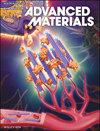Mechanical behavior of Be-Al alloys
引用次数: 0
Abstract
This study was conducted to identify the mechanical behavior of a wrought 62Be-38Al alloy and a cast 65Be-32Al-3Ni alloy. Tensile strength and elongation were measured at room and elevated temperatures. Fracture toughness was determined at room temperature. Fatigue resistance was characterized in terms of stress-life (S-N) and crack growth rate-stress intensity range (da/dN-ΔK) relations at room temperature. The resulting microstructures and crack paths of the aforementioned were also examined. The microstructure of the wrought and cast alloys consists of Be-phase particles dispersed within an Al-phase matrix. The Be-phase particles are aligned along the rolling direction in the wrought alloy, whereas they are coarser and round with no directionality in the cast alloy. Overall, the wrought alloy has better mechanical properties, including fatigue resistance, than the cast alloy. The conditional plane strain fracture toughnesses of the wrought alloy were determined to be 38. 8 and 22.4 MPa√m (35. 3 and 20.4 ksi√in) for the L-T and T-L orientations at room temperature, respectively. The crack path follows preferentially along the Al-phase and the Al/Be interfacial region for the wrought alloy at all temperatures and for the cast alloy at higher temperatures during tensile, fracture-toughness, and fatigue testing. However, while tensile testing at room temperature, the crack cuts through the Be- and Al-phases in the cast alloy.Be-Al合金的力学行为
研究了变形后的62Be-38Al合金和铸造后的65Be-32Al-3Ni合金的力学性能。在室温和高温下测量拉伸强度和伸长率。在室温下测定断裂韧性。在室温下,用应力-寿命(S-N)和裂纹扩展速率-应力强度范围(da/dN-ΔK)关系表征了材料的抗疲劳性能。并对其显微组织和裂纹路径进行了分析。变形和铸造合金的显微组织由分散在al相基体中的be相颗粒组成。变形合金中be相颗粒沿轧制方向排列,而铸合金中be相颗粒粗而圆,无方向性。总的来说,锻造合金比铸造合金具有更好的机械性能,包括抗疲劳性能。确定变形合金的条件平面应变断裂韧性为38。8和22.4 MPa / m(35。室温下L-T和T-L取向分别为3和20.4 ksi√in)。在拉伸、断裂韧性和疲劳测试中,在所有温度下,变形合金的裂纹路径优先沿着Al相和Al/Be界面区域,而在更高温度下,铸造合金的裂纹路径则优先沿着Al相和Al/Be界面区域。然而,在室温拉伸试验中,裂纹穿过铸造合金中的Be和al相。
本文章由计算机程序翻译,如有差异,请以英文原文为准。
求助全文
约1分钟内获得全文
求助全文

 求助内容:
求助内容: 应助结果提醒方式:
应助结果提醒方式:


